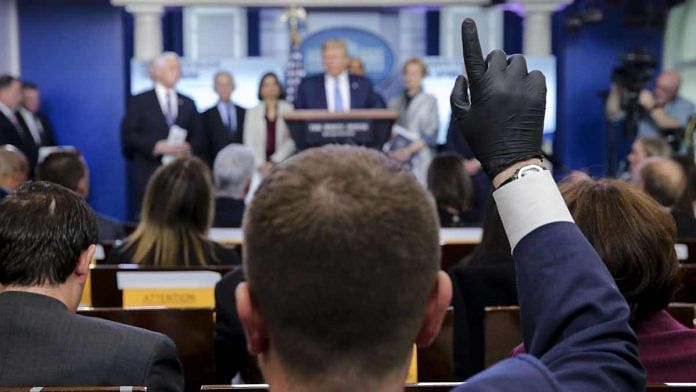New Delhi: The public needs to trust public officials and see the good and bad news every day, says an article published under the insights column in the peer-reviewed medical journal, Journal of the American Medical Association (JAMA).
Titled ‘Hospital Capacity and Operations in the Coronavirus Disease 2019 (COVID-19) Pandemic — Planning for the Nth Patient’, the article shared the dos and don’t for managing the outbreak after studying trends in Italy, Taiwan and South Korea.
It suggested the strategies that have been successful in containment of the disease, at least until now, while recognising that “hospital systems are designed for average patient loads and not for epidemics”.
“The common themes in success have been massive testing, adaptive policy recommendations for different regions, and communication by public officials that is constant, transparent, and honest,” the article said, adding that faith in public officials is vital.
It further elaborated that in some countries, such as Taiwan, authorities have been successful at combating the virus through “aggressive testing and containment measures”.
“South Korea, while initially inundated with patients from a rapidly spreading cluster, has successfully mitigated spread (at least temporarily) with minimal associated mortality,” it added.
Also read: Vaccine trials to contact tracing app — here are 5 global developments on COVID-19 front
Damage to public health system
Quoting a Chinese study, the article, written by Joseph J. Cavallo, Daniel A. Donoho and Howard P. Forman, said “patients with severe disease from COVID-19 require a mean of approximately 13 days of respiratory support” to establish that “the lengthy treatment time will further stress resources”.
“In manufacturing or customer service, queues may result in decreased profitability and/or the loss of customers; in critical care medicine, queues can be deadly,” it warned.
For example, take a large hospital with 100 beds in the Intensive Care Unit (ICU). Assume that at any given time, 70 per cent of these beds are occupied. The remaining 30 beds are the effective extra capacity to absorb patients with COVID-19.
“Because of the long treatment time (approximately 13 days), the number of new patients that can be accommodated per day during an extended outbreak is low. Admitting more than 2.3 patients per day with respiratory failure will lead to an unstable system and queues,” the article noted.
Also read: Coronavirus can spread even before infected people show symptoms, new study finds
Preparing for COVID-19
When containment fails, the exponential growth of cases can transform a public health emergency into an operational crisis.
To control it, preparations for expanding capacity should already be underway, it said.
While many hospitals could already have mass casualty protocols for catastrophic events, the COVID-19 response could require an “equal mobilization of staff and resources but during a sustained period”.
Also, hospitals in neighbouring areas should communicate early and often, given that efficient case sharing and transport between hospitals could become essential, it added.
Taking the example of Italy, the article said, “Bed capacity may not be the most crucial bottleneck for providing critical care… Observing Italy, experts are rightly concerned about the fixed number of ventilators. However, there are many other key factors to consider.”
It elaborated that the other risk factors include risk to health care workers, which could result in staff shortage.
Other preparations include fixing the sufficient drug supplies for effective respiratory and cardiovascular support and ascertaining if there are adequate supplies of personal protective equipment.
Also read: Govt allows private labs to test for COVID-19, but its appeal for free tests has few takers



